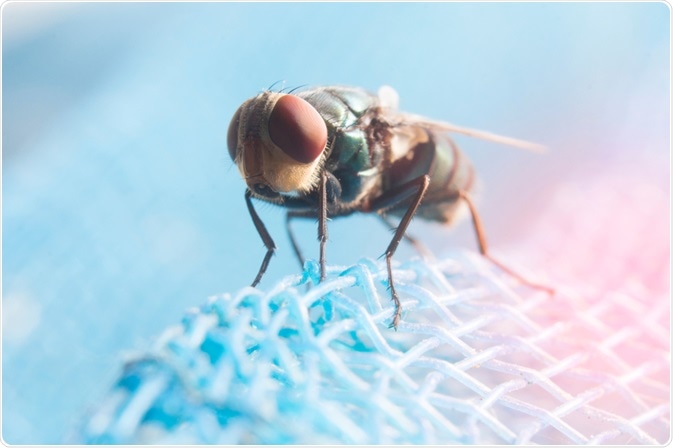African Sleeping Sickness (Human African Trypanosomiasis) is found in more than 30 regions in Sub-Saharan Africa. It is a national health concern that affects 60 to 70 million people.

Krumao | Shutterstock
If left untreated, African Sleeping Sickness can causes meningoencephalitis, coma, and death. The disease is spread through tsetse flies that feed on infected hosts. In 2015, 84 percent of Trypanosoma brucei infections (the main cause of the disease) were recorded in the Democratic Republic of Congo.
Early stage symptoms include a cyclical fever, headache, and muscle and joint pain. However, once the parasite has entered the CNS, symptoms become more severe, manifesting as cognitive and behavioral changes, as well as sleep disruption and encephalopathy. Read more about the symptoms of African Sleeping Sickness.
Treating African Sleeping Sickness
Patients diagnosed with African Sleeping Sickness who receive early and specific treatment have an excellent chance of survival. However, due to the non-descript symptoms of the early stages of this disease, it is often diagnosed late.
The treatment plan depends on the clinical presentation of the disease, and the parasitic cause; Trypanosoma brucei rhodesiense (East African Sleeping Sickness), which causes ~2% cases and is more severe, or Trypanosoma brucei gambiense (West and Central African sleeping sickness), which affects ~98% patients and is a chronic disease.
Below are the five chemicals mainly utilized for the treatment of African Sleeping Sickness:
For Stage 1 treatment:
- Pentamidine isethionate – This chemical compound was discovered in 1940 and is primarily used to treat patients infected by Trypanosoma brucei gambiense (West African sleeping sickness).
- Sodium suramin – This chemical compound was discovered in 1920 and is primarily used to treat patients infected by Trypanosoma brucei rhodesiense (East African Sleeping Sickness).
For Stage 2 treatment:
- Arsenic derivatives – these compounds may be used to treat both types of African sleeping sickness and are considered he first line of treatment for Trypanosoma brucei rhodesiense and the second option for resistant Trypanosoma brucei gambiense. However, recent studies have shown that in several populations in Central Africa, resistant strains of T. brucei gambiense are highly prevalent.
- Alpha-difluoromethylornithine – while effective for treating Trypanosoma brucei gambiense, this compound requires a more complex and meticulous treatment plan and is therefore seldom used.
- Nitrofuran thiazine – a treatment plan that combines alpha-difluoromethylornithine and nitrofuran thiazine and was developed in 2009. This treatment requires less frequent treatment and is therefore recommended by the WHO as a first-line treatment for T. gambiense infection.
There are a limited number of pharmacologic interventions for African sleeping sickness. It is hoped that further research into this condition will result in more effective treatment.
Further Reading